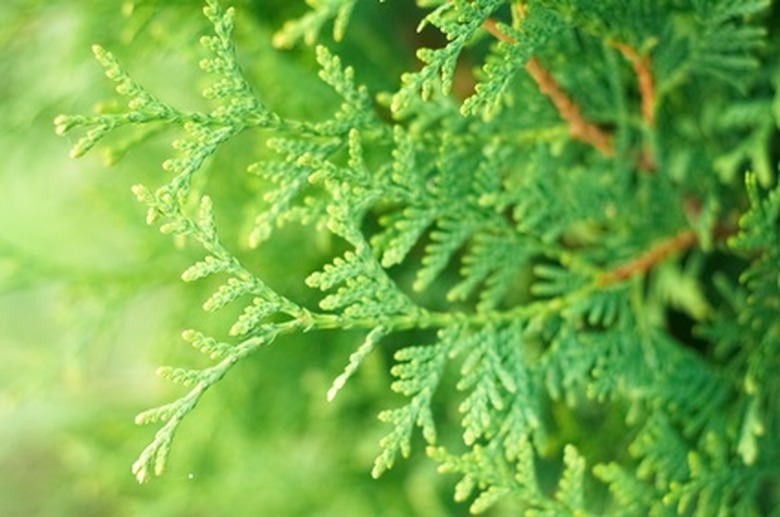How To Trim Juniper Trees
Things Needed
- Pruning shears
- Lopper
- Hand saw
- Gloves
- Eye protection
Junipers are a slow-growing evergreen. While there are several different species of juniper, they are all trimmed in the same manner. Junipers are best trimmed for shape when they are young and then will require little trimming as they mature. Mature Juniper trees should be trimmed lightly and at no time should you ever cut a green branch back to brown wood. Junipers cut back to brown wood almost never regrow in the brown area, leaving an ugly scar on the tree for many years. Trimming should take place in late winter or early spring before new growth begins.
Step 1
Cut off any dead or diseased branches and discard them.
- Junipers are a slow-growing evergreen.
- Mature Juniper trees should be trimmed lightly and at no time should you ever cut a green branch back to brown wood.
Step 2
Pull aside some of the outer branches carefully and look into the interior of the tree. Cut off the dead or brown branches that are not green on the ends in order to open up the inside somewhat. Juniper branches only add new growth from the tips of the old growth, which creates what appears to be a "dead zone" in the interior of the tree's canopy. You must not cut back to this old growth which is brown in color and appears almost dead. If the new green growth is cut back to old, brown growth, the old growth will no longer grow new, green growth.
Step 3
Step back and look at the tree to decide which branches need to be trimmed for a symmetrical appearance. Cut branches judiciously for appearance, never cutting back to brown wood. Always make your cuts where there is still plenty of green showing to cover any cuts you make.
- Pull aside some of the outer branches carefully and look into the interior of the tree.
- Step back and look at the tree to decide which branches need to be trimmed for a symmetrical appearance.
Tip
If your Juniper is cut back to brown wood you will need to decide whether you can live with the "scar" or whether you will replace the tree as the brown spot will not be covered with new green growth. Loppers or saws should only be used if large branches have died and must be removed or if you choose to remove a large branch entirely, cutting it back to the main trunk. Use bypass hand shears, not hedge or anvil shears.
